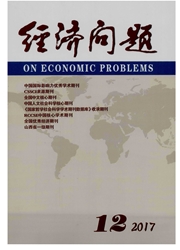

 中文摘要:
中文摘要:
生态文明建设要求重视企业发展对环境带来的压力。运用Super-SBM模型和Malmquist指数,选择云南16个州市2006—2014年面板数据为研究样本,分别对企业生态效率进行静态评价和动态分解,并运用Arc GIS 10.0软件进一步分析了企业生态效率的空间分布状况,通过构建Tobit模型,探析影响企业生态效率的因素。研究结果表明:2006—2014年间,云南企业生态效率总体水平不高,整体呈现出微弱波动的进步态势,地带性差异明显;分区域来看,东北部企业生态效率水平相对西南部要高;经济发展水平和研发强度对企业生态效率产生了显著的正向影响,外商投资产生了显著的负向影响,产业规模和对外开放程度未产生显著影响。
 英文摘要:
英文摘要:
Ecological civilization construction requires our attention and care to the impact of the enterprise development on the environment. In this paper, the panel data of 16 cities in Yunnan Province from 2006 to 2014 are selected as the research samples, and the ecological efficiency of enterprises is evaluated and dynamically decom- posed by Super-SBM model and Malmquist index. ArcGIS10.0 software is used to further analyze the spatial distribution of enterprise eco-efficiency. The Tobit model is constructed to analyze the influencing factors of enterprise ecological efficiency. The results show that the overall level of ecological efficiency of enterprises in Yunnan Province is not high between 2006 and 2014, and overall presents an upward trend of small fluctuations. Regional differences are obvious from the sub-regional perspective: the enterprise eco-efficiency level of the northeast is higher than that of the southwest. Economic development level and Research & Development (R&D) intensity have a significant positive impact on the ecological efficiency of enterprises. Foreign investment has a significant negative impact, while the scale of industry and the degree of opening to the outside world have no significant impact.
 同期刊论文项目
同期刊论文项目
 同项目期刊论文
同项目期刊论文
 期刊信息
期刊信息
